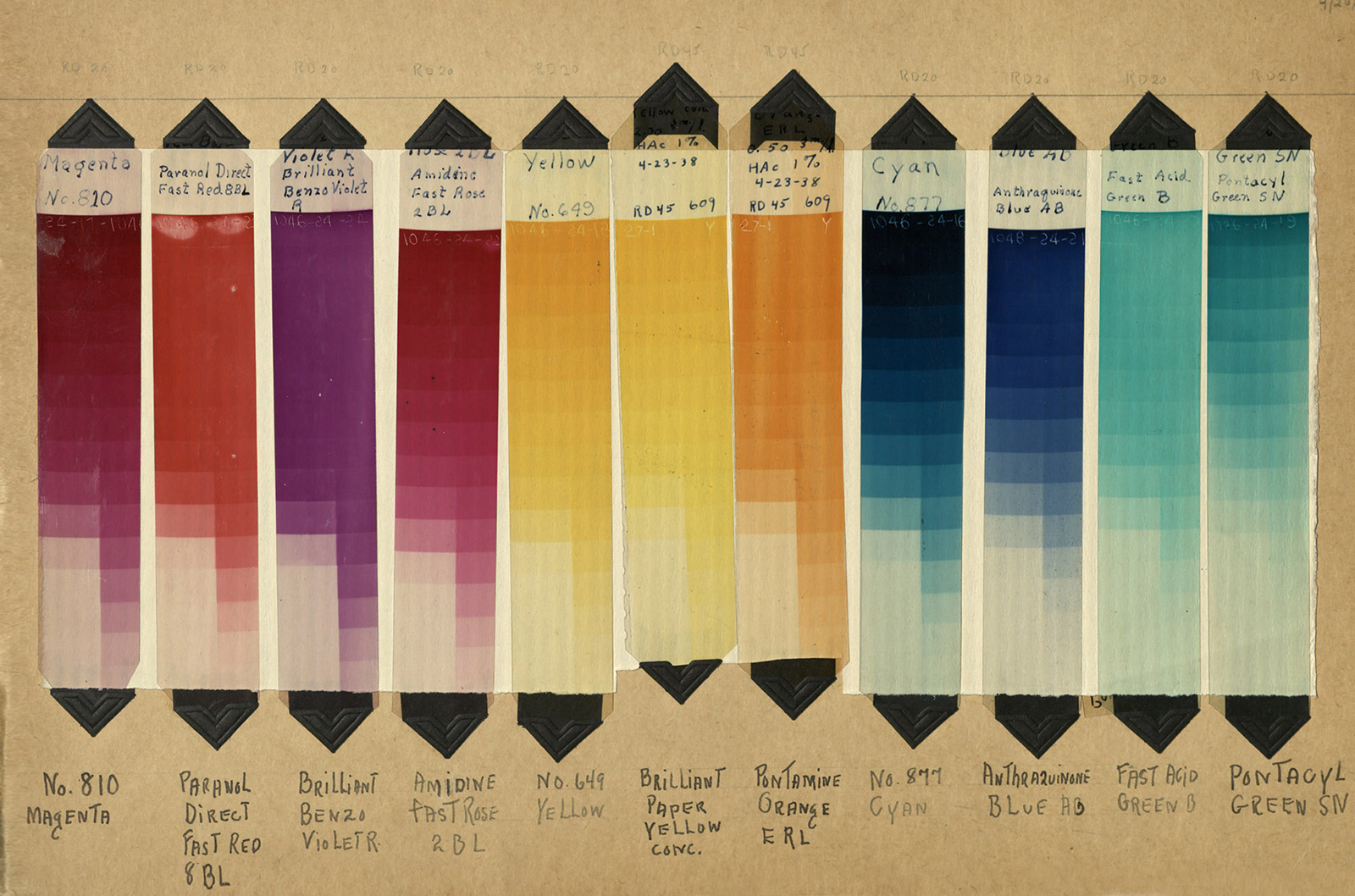Beige Stage
How Technicolor invented the Hollywood palette
Sasha Archibald

“I am not very fond of Color,” announces Roland Barthes in his meditation on photography and affect, Camera Lucida. Barthes’s hesitancy is one of the least idiosyncratic aspects of the book; he shares his chromatic reservations with Western European culture in general, and intellectuals in particular. Two centuries ago, Goethe famously spoke of “people of refinement” who were inclined to “banish [color] altogether from their presence,” and little has changed since.[1] Black clothing and white interiors still signal sophisticated taste. A slip of turquoise may be fashionable, but a riot of purple and yellow is not. This collective aversion to bright color constitutes what anthropologist Michael Taussig calls “cultural chromophobia,” a phenomenon that he argues represents the vestiges of colonialism.[2] Indeed, Goethe wrote that in contrast to “people of refinement,” those who have a “predilection for vivid colours” are “savage nations, uneducated people, and children.”[3] Taussig tries to tease out how prejudice comes to be described as taste, but it’s a difficult task. Our notion of what is gaudy and what is not seems beyond reproach.
Chromophobia is evident everywhere in the history of color photography and color film. Color images are now standard, but their emergence was not particularly welcomed; an appetite for color had to be coaxed and cultivated. The Lumière brothers were astonished that their black-and-white moving images attracted more interest than their color photography, and when color photographs—from a variety of fields, including fashion, advertising, and documentary—finally made their way into the Museum of Modern Art in 1950, the exhibition had the opposite effect to what its curator, Edward Steichen, intended. Rather than herald color’s expanding relevance, “Color Photography”hardened the argument against it. “The show,” writes art historian Kevin Moore, “only emphasized what was commonly believed: color was a commercial and amateur medium not suitable for art.”[4] Almost twenty years later, in 1969, Walker Evans was still describing color photography as “vulgar.”[5]
The dynamic was the same in the case of color film. Its inventors assumed that their task was to create a workable technology. But even when the technology was in place, audiences were largely uninterested, if not hostile. The first color films were marketed as if color was its own genre—as if someone would seek out a color film on Friday and a Western on Saturday. It turned out that color was not the draw its inventors expected. Color was acceptable for scenics and cartoons, but in full-length narrative films, it was thought to strain the eyes, cause headaches, and, above all, represent poor taste. One small-town theater owner in Oregon reported to his distributor that his audience could handle just one color picture a year. The company that eventually became synonymous with color film achieved success only after addressing the ways in which color seemed to disrupt, rather than enhance, the pleasures of cinema. Until then, film was by definition black and white, and color a self-aggrandizing interloper. This is the story of how one company single-handedly assuaged our chromophobia and changed the history of aesthetics.
• • •